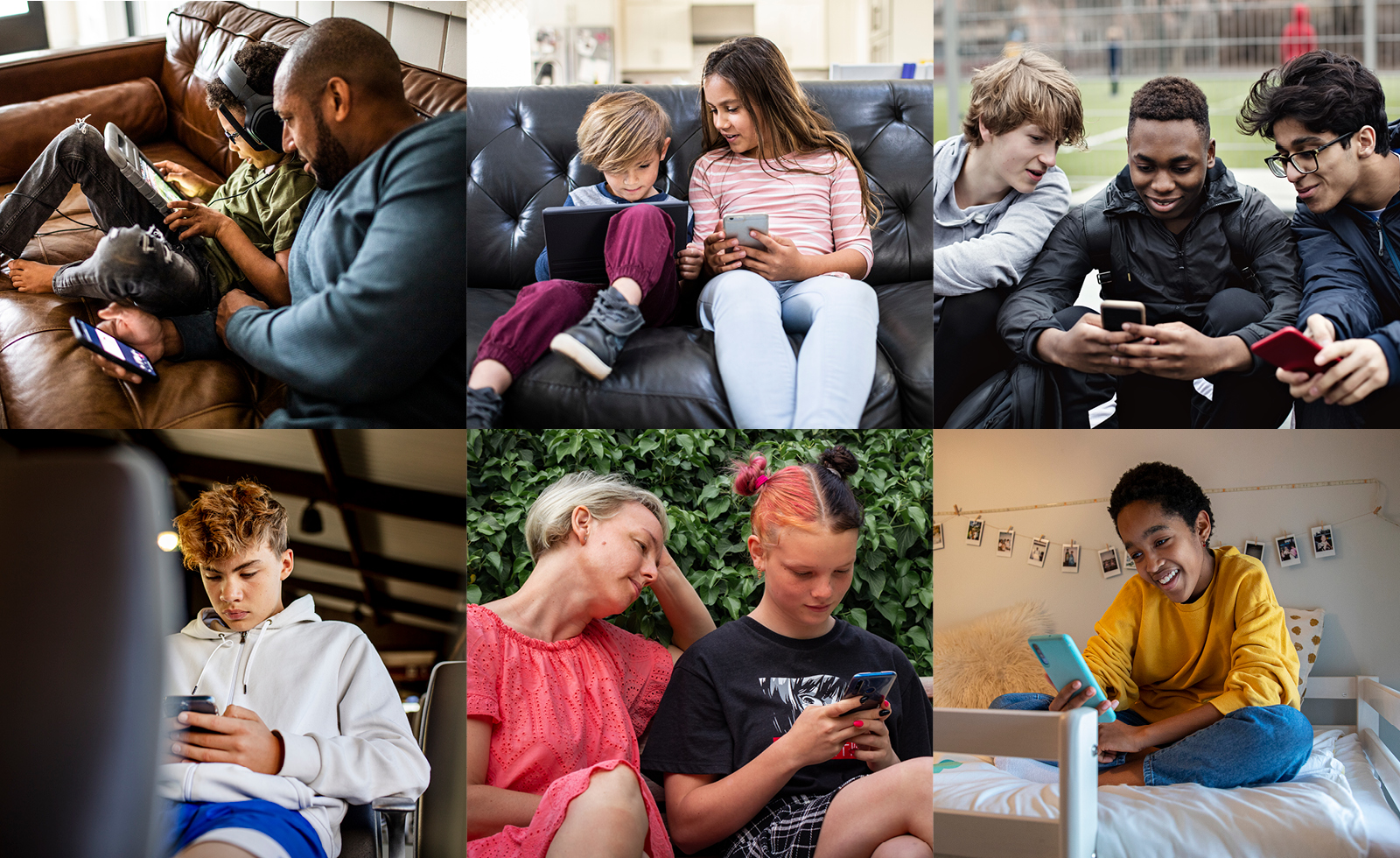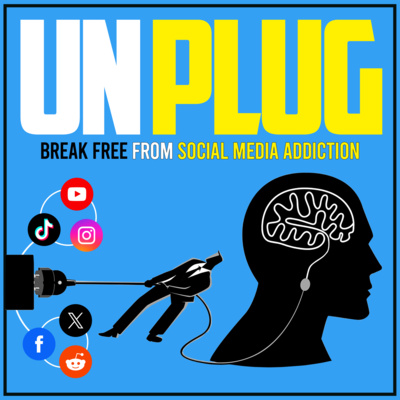Social media is everywhere, and your teen is likely spending a lot of time scrolling, sharing, and chatting. While it can be a great way for them to connect with friends and explore interests, there’s a darker side to it that you can’t ignore.
You want to make sure your teen is safe, but how do you do that without ruining the fun? It’s a delicate balance, but it’s possible to find it. Imagine a world where your teen enjoys the best of social media without falling into its traps.
That’s what we’re here to explore. You will discover practical strategies to protect your teen while allowing them to enjoy their online experience. Keep reading to learn how you can be a guiding force in their digital life without being the villain.
Rise Of Social Media Platforms
Social media platforms are booming, but they have risks for teens. Balancing fun and safety is crucial. Parents can guide their children by setting boundaries and staying informed.
The digital landscape has transformed dramatically with the rise of social media platforms. Initially designed to connect people, these platforms have become a central part of our daily lives, especially for teenagers. While they offer a world of possibilities, they also come with challenges that every parent should be aware of. How can you ensure your teen enjoys their online time safely?Popularity Among Teens
Social media is a playground for teens. Platforms like Instagram, TikTok, and Snapchat dominate their screens. They use these apps to express themselves, share experiences, and connect with friends. But, have you ever wondered why these platforms captivate their attention? It’s the instant connection and feedback. A like, a comment, or a share can mean the world to them. As a parent, understanding this allure is crucial. Instead of outright banning, try discussing what they like about these platforms. This way, you can guide them in making safer choices online.Evolution Over The Years
Remember when Facebook was the go-to place for social interaction? That was a different era. Social media has evolved, introducing new platforms and features that cater specifically to younger audiences. The rapid pace at which these platforms change can be overwhelming. Each update brings new opportunities and risks. It’s crucial to stay informed about these changes to support your teen effectively. Consider joining a platform your teen uses. This can help you understand its dynamics better. However, respect their space and privacy. Your aim is to guide, not to intrude. Social media is a powerful tool, but it requires responsible handling. By staying engaged and informed, you can help your teen navigate its dark sides without dampening their fun. What steps are you taking to ensure their online safety today?
Credit: www.apa.org
Impact On Mental Health
Social media has transformed the way teens interact with the world. While it offers fun and connection, it can also impact mental health. Teens often face challenges that affect their emotional well-being.
Anxiety And Depression
Constant notifications can overwhelm teens. They feel pressure to respond quickly. This urgency can lead to stress. Seeing perfect images online might make them feel inadequate. They start comparing their lives with others. This comparison can trigger anxiety. Over time, this anxiety can evolve into depression. Teens might struggle with feelings of loneliness. They believe everyone else is happier than them. It’s crucial to monitor their social media usage.
Self-esteem Issues
Social media often promotes unrealistic standards. Teens see edited photos and flawless lifestyles. This can harm their self-esteem. They may feel they don’t measure up. Negative comments can also affect their self-worth. They might start doubting themselves. Their confidence can take a hit. It’s important to remind them of their unique qualities. Encourage them to focus on real-life achievements. This helps build a strong self-image.
Cyberbullying And Online Harassment
Social media’s dark side involves cyberbullying and online harassment. Protecting teens without ruining their fun is crucial. Encourage open conversations and set clear boundaries to create a safe online environment.
Social media platforms are vibrant spaces for teens to connect, share, and express themselves. However, lurking beneath the surface is a darker aspect—cyberbullying and online harassment. These issues can have severe implications on a teen’s mental health and overall well-being. As a parent, understanding these challenges is crucial to help your teen navigate the online world safely.Recognizing Cyberbullying
Cyberbullying can be subtle yet damaging. It often manifests as hurtful comments, spreading rumors, or creating fake profiles to embarrass someone. You might notice changes in your teen’s behavior, such as becoming withdrawn or anxious, which could indicate they are experiencing online harassment. Encourage open conversations about their online interactions. Share stories from your own teenage years, even if they were offline, to build trust and show empathy. Ask your teen if they’ve seen or experienced any unkindness online and how they felt about it.Consequences For Teenagers
The effects of cyberbullying can be long-lasting. Teens may suffer from low self-esteem, anxiety, and even depression. These consequences can impact their academic performance and social relationships. Consider the story of a teen who, after being bullied online, stopped participating in school activities they once loved. This highlights the importance of addressing cyberbullying early. Open communication and support can help your teen regain confidence and maintain their interests. As a parent, how can you balance monitoring your teen’s online presence without invading their privacy? It’s a delicate dance, but one that can be achieved through mutual respect and understanding. Discuss boundaries and agree on reasonable rules to keep them safe while respecting their independence. By being proactive and supportive, you can help your teen enjoy the benefits of social media while staying safe from its potential harms.Privacy And Data Concerns
Social media has become an integral part of your teen’s life, offering a dynamic world of connections and information. However, with this digital playground comes a shadow—privacy and data concerns that can put your teen at risk. It’s crucial to strike a balance between letting them enjoy social media and ensuring their safety.
Data Breaches
Data breaches are more common than you might think. Every time your teen signs up for a new app or social media platform, they’re sharing personal information. But what happens when this data falls into the wrong hands?
Major platforms have been hacked, exposing millions of users’ data. Encourage your teen to use strong, unique passwords and enable two-factor authentication. This small step can greatly reduce their vulnerability to data breaches.
Personal Information Exploitation
Social media platforms often harvest personal data, sometimes without users realizing it. This information can be exploited for targeted ads or, worse, sold to third parties. Does your teen know what’s being done with their data?
Talk to them about the importance of reading privacy settings and adjusting them to protect their information. Remind them to think twice before sharing personal details online. A simple conversation can make them more conscious of their digital footprint.
Keeping your teen safe online doesn’t mean taking away their fun. It’s about teaching them to navigate the digital world wisely. What steps will you take today to protect their privacy while they enjoy the benefits of social media?
Social Media Addiction
Social media addiction often hides in plain sight, affecting teens’ mental health. Balancing enjoyment with safety is crucial. Parents can set boundaries and encourage offline activities to maintain healthy habits.
In today’s digital age, social media has become an essential part of our lives. It’s a tool for connecting, sharing, and expressing. But for many teens, it also poses the risk of addiction. This can lead to negative impacts on their mental health and daily life. Understanding the signs of social media addiction can help you guide your teen towards healthier online habits without taking away their fun.Signs Of Addiction
Recognizing social media addiction in your teen can be challenging. They may spend excessive hours on platforms like Instagram or TikTok. You might notice them constantly checking their phones, even during meals or family time. They may become anxious or irritable if they can’t access their accounts. Perhaps you’ve seen them lose interest in activities they once loved, preferring to scroll instead. It’s crucial to observe these behaviors and address them early.Impact On Daily Life
Social media addiction can disrupt your teen’s daily life in significant ways. It might affect their school performance as they struggle to concentrate on homework. You may find them staying up late, sacrificing sleep to keep up with online interactions. Social interactions in real life can also suffer. Teens may withdraw from face-to-face conversations, missing out on building essential social skills. This digital obsession can lead to feelings of loneliness and depression, ironically the opposite of what social media promises. As a parent, it’s vital to discuss these issues openly with your teen. Encourage them to set boundaries and find a balance between online activities and real-world experiences. How can you help your teen enjoy social media responsibly, without letting it take over their life?
Credit: www.netflix.com
Positive Aspects Of Social Media
Social media connects teens with friends and provides a platform for creativity. Balancing safety and fun is essential for a positive experience.
Social media often gets a bad rap, especially when it comes to teenagers. However, it’s important to remember that not everything about it is negative. There are numerous positive aspects that can benefit your teen in amazing ways. By focusing on these positives, you can help your teen navigate the digital world safely while having fun.Educational Opportunities
Social media can be a fantastic tool for learning. Many platforms offer educational content that can spark curiosity and inspire your teen. From science experiments on TikTok to historical documentaries on YouTube, the possibilities are endless. Encourage your teen to follow educational pages or join groups that align with their interests. This way, they can learn new things while scrolling through their feed. Have you ever thought about how your teen could use social media to boost their grades or explore new hobbies?Connectivity And Support
Social media connects your teen to friends and family, no matter the distance. It offers a sense of community and belonging that can be incredibly comforting, especially during tough times. It also provides a platform for your teen to find support. Whether it’s joining a group for students dealing with exam stress or engaging in conversations about mental health, these connections can be invaluable. How can you encourage your teen to use social media to build a positive support network? By understanding these positive aspects, you can guide your teen to use social media in a way that enriches their life without overshadowing their offline experiences.Strategies For Safe Social Media Use
Social media has a dark side that can impact teens. Keep them safe with open conversations and privacy settings. Balance their fun and safety by setting clear boundaries and encouraging positive online interactions.
Navigating the world of social media can feel like a tightrope walk, especially when it comes to keeping your teens safe. You want them to enjoy the benefits—connecting with friends, learning new things, and expressing themselves. But how do you ensure their safety without putting a damper on their fun? Below are some practical strategies for safe social media use that can help you strike the right balance.Setting Boundaries
Establishing clear boundaries is essential. Talk with your teen about what is acceptable and what is not when using social media. Consider setting time limits for social media use. This can prevent excessive screen time and encourage them to engage in other activities. Discuss the importance of privacy settings. Make sure their accounts are set to private, limiting who can view their posts and personal information.Promoting Digital Literacy
Educate your teen about digital literacy. This involves understanding the online landscape and recognizing the difference between reliable and unreliable sources. Encourage critical thinking. Ask your teen to question the authenticity of what they see online. Is the information credible? Who is the source? Discuss the concept of a digital footprint. Remind them that what they post online can have long-term effects on their reputation and future opportunities. Engage with your teen. Have open conversations about their online experiences and any concerns they might have. Do they feel pressured to portray a certain image? Are they comparing themselves to others? Empower them to make informed decisions. Let them know it’s okay to step back from social media if it becomes overwhelming. Keeping your teen safe on social media doesn’t mean stripping away their freedom. It’s about equipping them with the right tools and knowledge to navigate the digital world responsibly. How are you helping your teen stay safe online?Role Of Parents And Guardians
Parents and guardians play a crucial role in guiding teens through social media challenges. Protecting teens while allowing them to enjoy online interactions requires balance and open communication. Establishing clear boundaries helps keep them safe without stifling their social media experiences.
Role of Parents and Guardians Navigating the digital world can be daunting, especially for teens. As a parent or guardian, your role is crucial in guiding them safely without stripping away their fun. Finding that balance between protection and freedom is key to empowering your teen.Monitoring Online Activity
Monitoring your teen’s online activity doesn’t mean micromanaging every click. It’s about ensuring their safety while respecting their independence. You can achieve this by using parental control apps that provide insights without being intrusive. Engage with your teen by exploring their favorite platforms together. This not only helps you understand their digital landscape but also builds trust. Ask yourself, how can you make this a bonding experience rather than a policing act?Encouraging Open Communication
Creating an environment where your teen feels comfortable discussing their online experiences is essential. Encourage them to share both positive and negative interactions they encounter on social media. This openness can prevent potential issues from escalating. Share your own online experiences with them to foster a two-way conversation. This shows that everyone, regardless of age, faces challenges in the digital world. How often do you initiate these conversations with your teen? Involve them in setting boundaries and rules for social media use. When they participate in the decision-making process, they are more likely to adhere to the guidelines. What boundaries would you both agree on for a safe and enjoyable online experience? By taking these actionable steps, you can help your teen navigate the dark side of social media while ensuring they still have fun.Building A Positive Digital Environment
Navigating social media’s dark side is crucial for keeping teens safe. Balance safety with fun by setting clear boundaries. Encourage open communication and guide them in making smart choices online.
Creating a safe and enjoyable digital environment for your teen can feel like walking a tightrope. You want them to enjoy the benefits of social media, but you also want to protect them from its darker sides. The key is not to impose strict restrictions but to guide them towards building a positive digital presence.Encouraging Positive Interactions
Start by discussing the importance of kindness and respect online. Just like in real life, the way your teen interacts with others on social media can significantly shape their experiences. Encourage them to leave uplifting comments and be supportive of their friends’ posts. Have open conversations about the impact of their words. Ask them how they feel when someone leaves a positive comment on their posts. This can help them see the value of spreading positivity and how it contributes to a healthier online environment. As a parent, you can model this behavior too. Share positive stories and comments, showing your teen how to engage constructively. This not only boosts their confidence but also fosters a community where everyone feels appreciated.Creating Safe Spaces Online
Identify platforms where your teen can express themselves safely. Some online communities are designed to be supportive and nurturing, like hobby-focused groups or educational forums. Encourage your teen to explore these spaces. Teach them to recognize red flags, such as unsolicited messages or requests for personal information. Remind them that it’s okay to block or report users who make them uncomfortable. It’s essential they feel empowered to protect their digital space. You can also set up privacy settings together. Walk through their accounts and discuss who can see their posts and who can contact them. This not only safeguards their privacy but also reassures them that you trust their judgment. By focusing on these aspects, you help your teen build a positive digital environment. How do you balance freedom with safety in your teen’s online world?
Credit: www.apa.org
Frequently Asked Questions
How Can I Monitor My Teen’s Social Media Usage?
Monitoring your teen’s social media involves open conversations and setting boundaries. Use parental control apps to track their activity. Encourage them to share their online experiences. Educate them about online safety and the impact of social media. Balance supervision with respect for their privacy to maintain trust.
What Are The Risks Of Social Media For Teens?
Social media can expose teens to cyberbullying, privacy breaches, and unrealistic expectations. They may face pressure from peers or strangers. It can affect their mental health and self-esteem. Encouraging responsible use and open communication can help them navigate these challenges safely.
How Can Teens Protect Their Privacy Online?
Teens should use privacy settings on social media accounts to limit who sees their information. Encourage them to think before sharing personal details or images. Teach them about the dangers of oversharing and the importance of strong, unique passwords. Regularly review their online profiles for unnecessary exposure.
What Are Signs Of Social Media Addiction?
Signs include constant checking of devices, neglecting responsibilities, and mood changes when offline. Teens may feel anxious without access to social media. They might prioritize online interactions over real-life connections. If these signs appear, discuss healthy habits and the importance of balancing online and offline activities.
Conclusion
Balancing safety and fun on social media is crucial for teens. Parents should stay informed about online trends. Communicate openly about digital risks. Encourage positive interactions and responsible behavior. Set clear boundaries without being too strict. Use privacy settings to protect personal information.
Monitor activities without invading privacy. Teach teens to recognize harmful content. Help them understand the importance of mental health. Social media can be enjoyable and safe. With guidance, teens can enjoy online experiences responsibly. Prioritize their well-being while allowing them to explore.
Safety and fun can coexist in the digital world.


